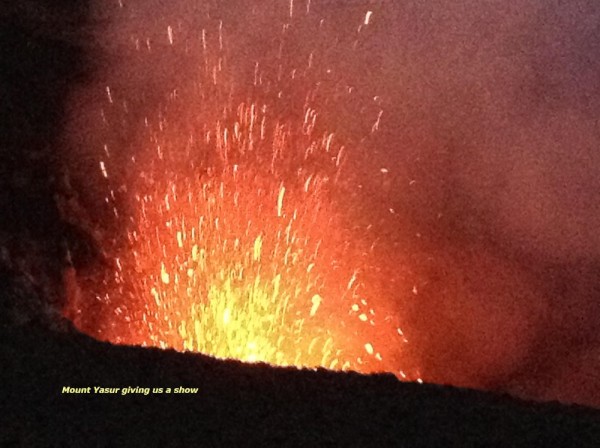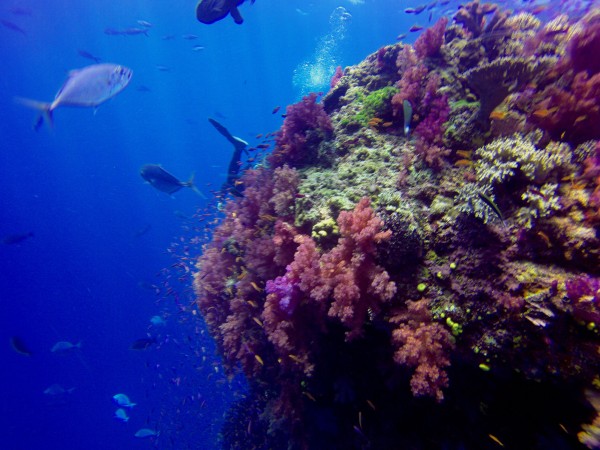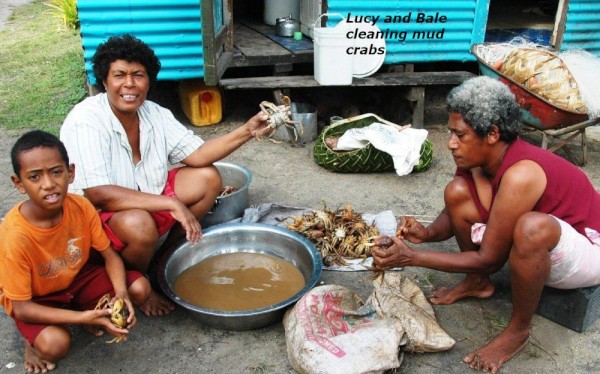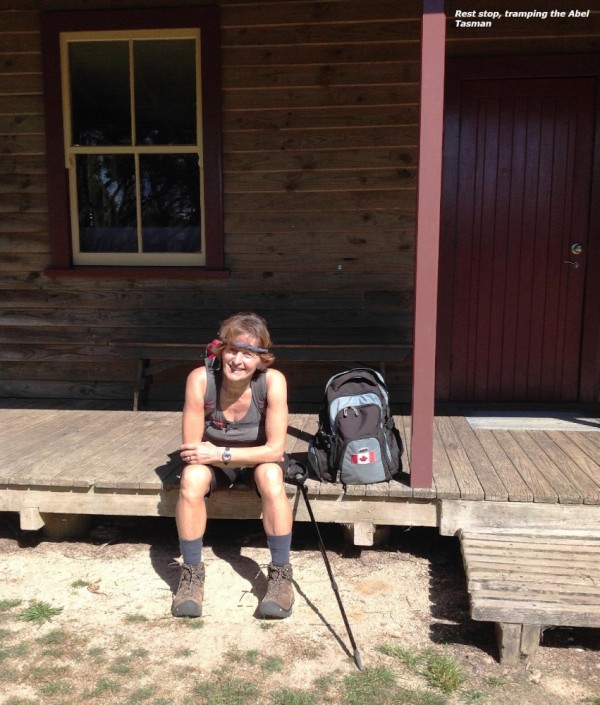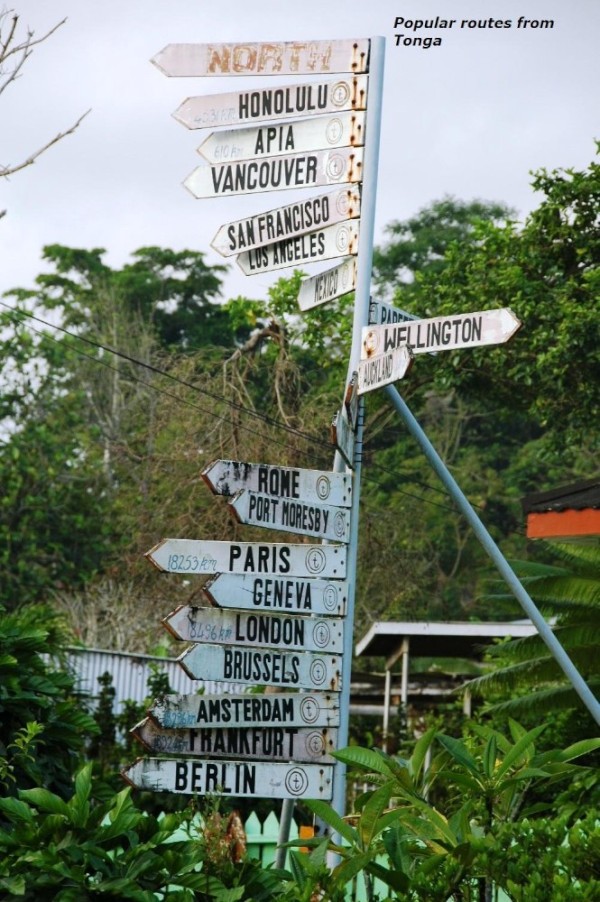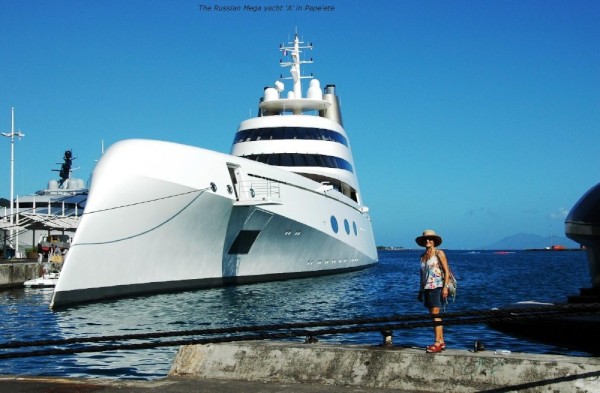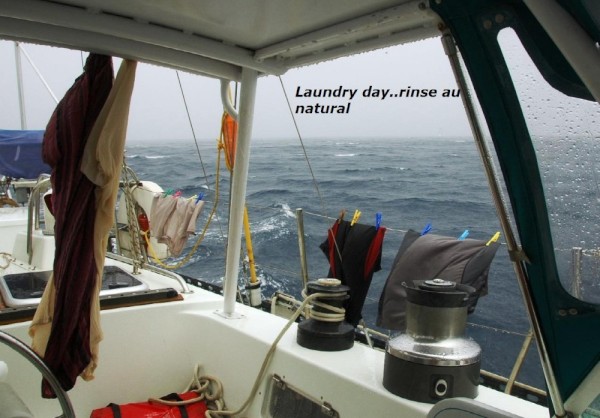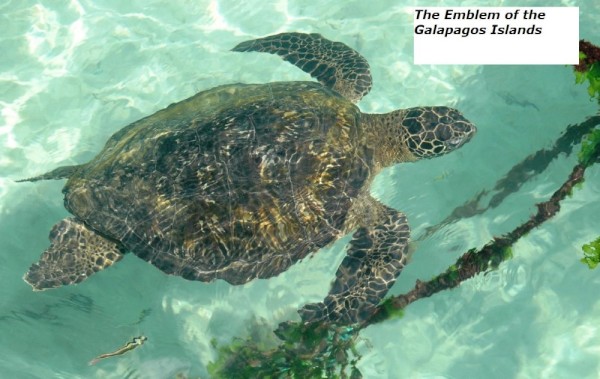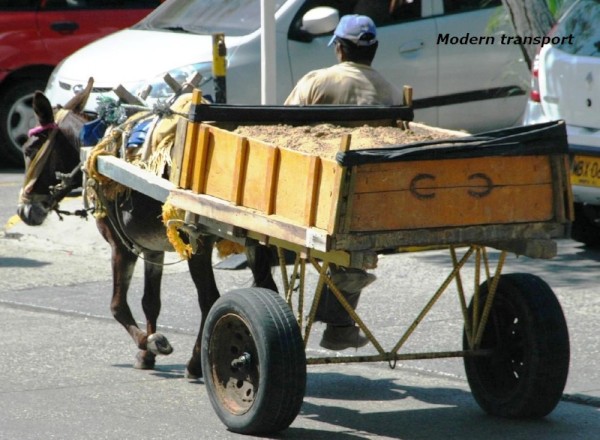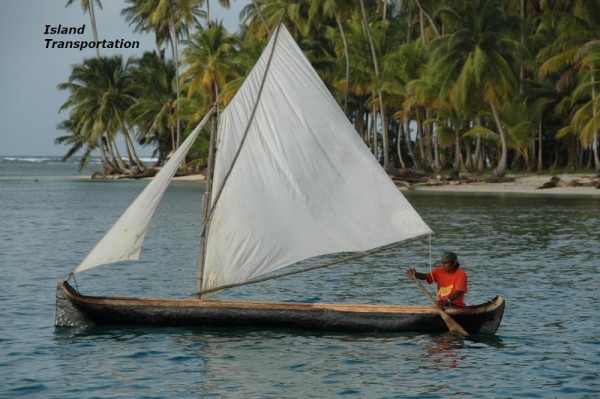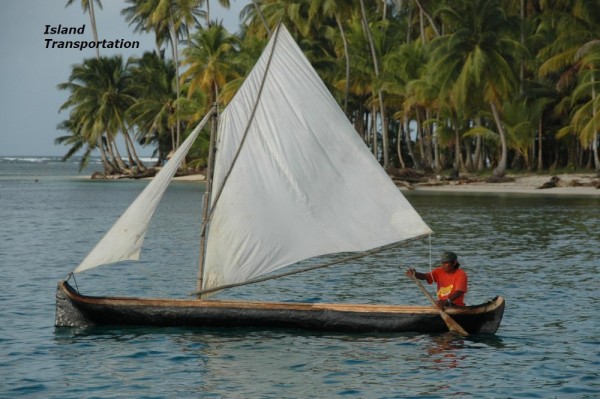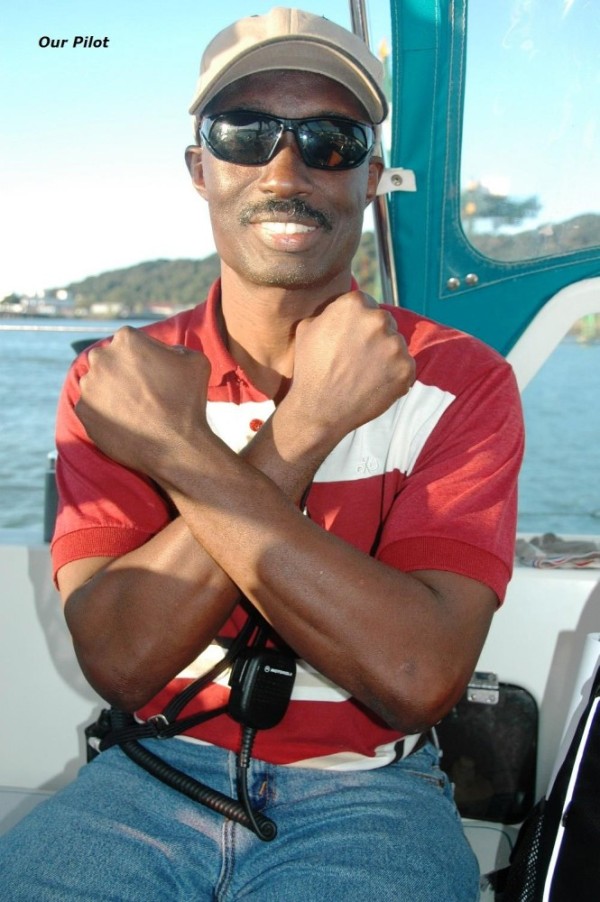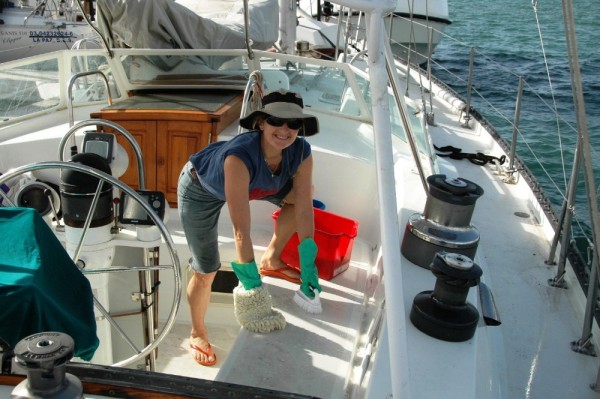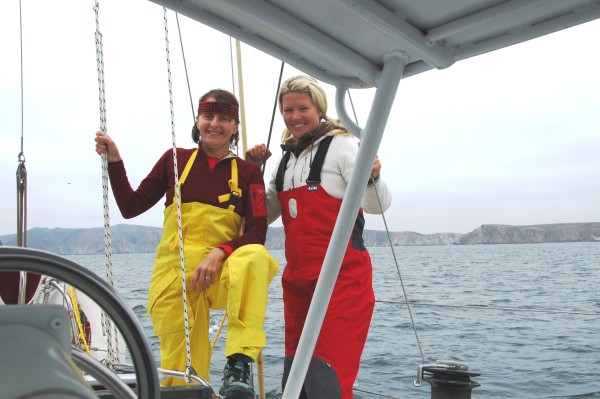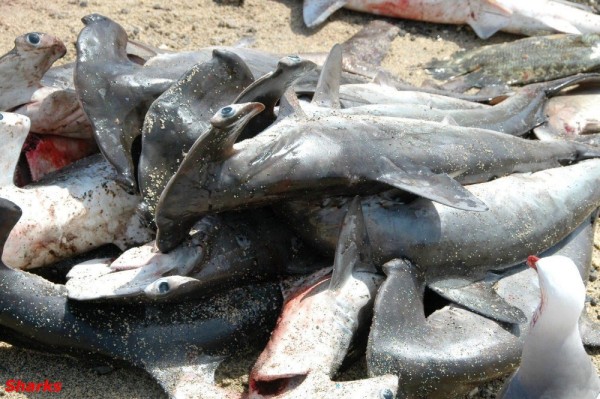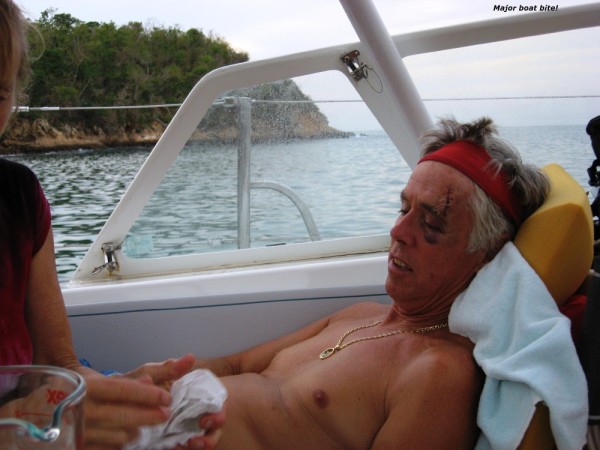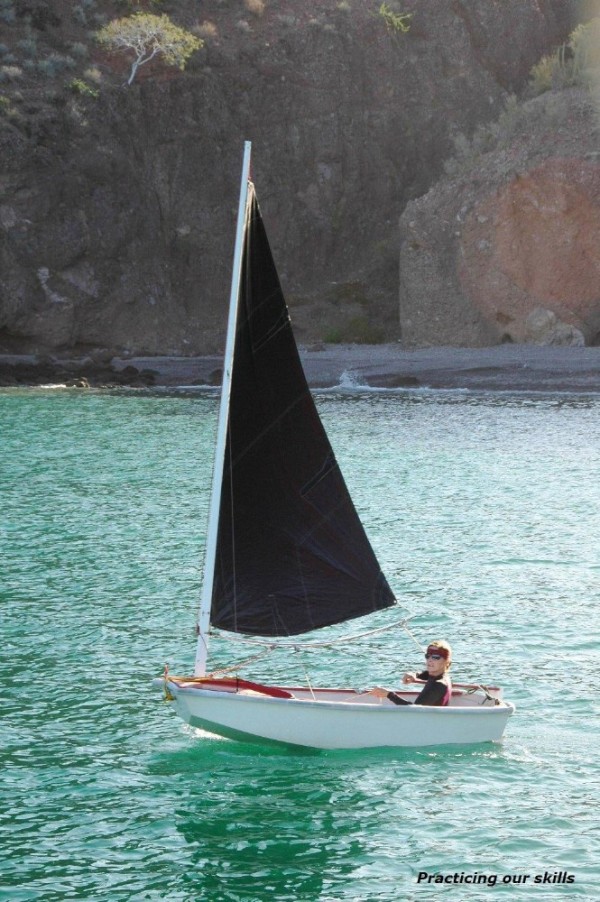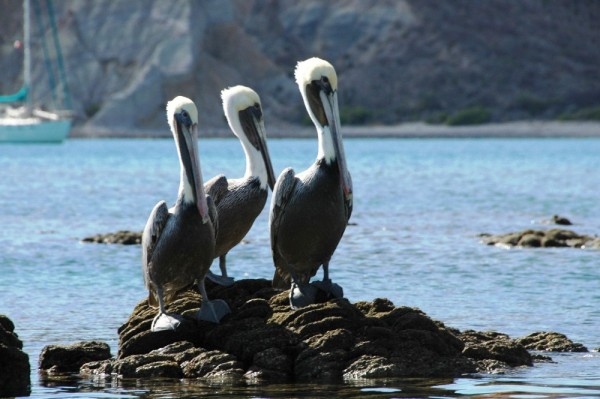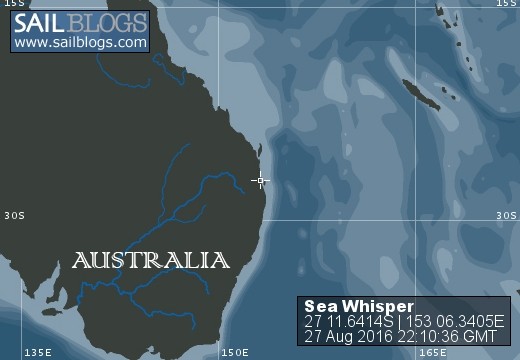
Adventures of Sea Whisper
19 July 2016
23 December 2015
23 December 2015
02 August 2015 | Tonga Fiji
14 February 2015
30 September 2014
31 July 2014 | Fiji
05 June 2014
04 November 2013 | Tonga
25 October 2013
18 May 2013
18 May 2013
23 March 2013 | Columbia/Panama
01 February 2013 | San Blas Islands
31 January 2013
22 November 2012
06 April 2012 | Mexican Gold Coast to Sea Of Cortez
05 February 2012 | Mexican Gold Coast
15 December 2011 | Mexican Gols Coast
20 November 2011 | Sea of Cortez
Adventure 23 Solomon Islands part 2
19 July 2016
Barbara
SOLOMON ISLANDS PART 2 –THE UNDISCOVERED PARADISE
HISTORY, CULTURE AND THE WANTOK SYSTEM
Sea Whisper continues to cruise the Solomon Islands seeking adventures and discovering the hidden delights of these tropical islands. We soon discover that Solomon Islanders are very obligated to their clan and their chief, known as the village ‘bigman’. Their Melanesian culture observes the Wantok system. A system that involves obligations and privileges with your clan and family who speak your language in your village. In Pidgin English it means ‘one talk’. In every village it makes sense to look after the clan’s people: to share food and land and community assets; but in the politics and public affairs of the country it can be quite corrupt. Favouring relatives and the ‘Clan’ in politics and public affairs can effect everything in this country. Their beliefs, land ownership and traditions are often referred to as ‘Kastom’. As we travel further in the Solomon Islands on Sea Whisper we hear stories from the villagers about the Wantok system and how it affects them as individuals and the present and future development of the Solomon Islands. Putting the Wantok system aside, here are some more of the stories and adventures about our summer cyclone season in the paradisiacal Solomon Islands where the scenery reminds us of a documentary on the Discovery Channel and the history is steeped in the leaf-hut villages of the remote islands.
WHAT IT’S LIKE IN A REMOTE VILLAGE
We meet Caleb Besa and Mendon Meza in the town of Gizo in the Western Province of the Solomon Islands. They are outstanding stone and wood carvers who invite us to their respective villages - Kolomali and Varova on Rannogga Island about 45 miles from Gizo in the Western Province. Mendon will carve us a Fish God from river stone and Caleb has promised to carve a ‘Sea Whisper’ sign from Wasa wood. We must go and find their villages and see what it’s like growing up and living in a place without electricity, running water, phones, toilets and – gasp – the Internet? Where kids swim near crocodiles and people have almost no concept of time. Eighty percent of the Solomon Island population live each day like this. Food, shelter and almost every basic life necessity is available for them.
We sail Sea Whisper to Rannogga Island and pass by a fisherman in a canoe to ask where to find Kolomali village. “Around the reef on the other side,” was his response. We’ve learned the ‘the other side’ is a common and well used phrase in this country. We pull into the bay and in a flash the canoes are launched to come to greet us. Women and children gather on the shore. The village kids paddle like fury to Sea Whisper in all sizes and conditions of dugout canoes. Soon we spot Mendon in his long canoe with his welcoming smile. He is elated to see us. From a locker we dig out the ‘lollies’ to hand out to the eager little paddlers who are bailing their canoes like mad with their feet. We’re happy to be here and meet the people of Kolomali village of about 200 men, women and children. Hastily, we launch our little dinghy and row to shore making landfall through the surf to the black sand beach. With gifts for the chief we weave our way up the rocky path to the Chief’s leaf house followed by an entourage of kids. The Chief and his wife welcome us and accept our gifts: a flashlight, batteries and jewellery. We walk through the village and stop at Mendon’s house to meet his wife Emma and their children. Mendon proudly displays his carvings in his make-shift workshop under his house. He’s busy working on our Fish-God, carving and polishing it to perfection. The surrounding gardens are colourful and textured with tropical flora. The wood and leaf houses are scattered in clusters. Many of the children nude and almost nude stare in wonder at two white strangers in their midst. The toddlers cry and cling to their mothers. The adults seem a bit bashful as they cast their eyes in wonderment. This could be the first time they have ever been visited by a yacht and white people from a foreign land. We talk and sing songs with the kids; and begin to tell stories and laugh with the grown-ups. English doesn’t seem to be a problem for them. Walking about the village with a herd of kids following us and clinging to our sides like glue we feel warmly welcomed! The village adventure begins.
The next day Mendon, Emma and Eon their son take us to their garden before the Sunday morning Anglican Church service. We walk a long way into the jungle crossing streams up and down the river bank. The tropical sun is already hot. The still air is sticky humid. Gardens are never in one’s back yard in the remote islands of the South Pacific. We finally reach ‘the Mesa family garden’ which is a fair size patch of sloping land displaying reddish soil with crops and patches of cassava, peppers, ginger, eggplant, potatoes, yams and tobacco! We pick peppers and eggplants and then pluck a few crisp and tender succulent ginger roots out of the ground. The Solomon Island ginger has become a mainstay in our cooking onboard Sea Whisper. Close by the scent of the tobacco wafts through the humid air. Mendon is proud of his tobacco leaves. He makes cigarettes rolls with plain paper saving extra dollars at the market. Feeling very sticky and overheated the five of us wade into the river with our clothes on (that’s the Solomon way) and cool off in the tepid water. Wow, it is so refreshing - the clear and cool water. Back on the jungle trail, after a change of dry clothes, we trek back to the village and to the church service. Here everyone is dressed in their Sunday best. The Deacon greets us and escorts us right to the front benches where all the children are sitting. By now the kids know us and they are grinning like crazy and think it’s so cool that two white Canadians are joining them on the bench pews. We are introduced as special guests from Canada and are invited to give a little story about our journey on Sea Whisper in the South Pacific. The service is very nice and some of it is spoken in English. Solomon Islanders are very musical – it’s a must to attend the local village church to hear the singing. We like the music very much…..especially when Eon, Mendon and Emma’s son, plays his guitar. After church it’s back to Mendon’s house with all the family to eat the Casava pudding and potatoes that have been baking in the ‘Motu’ oven for 2 hours: the oven made of hot stones and covered with many layers of banana leaves and sacks. As we savour the Solomon Island hospitality, we’re thinking how lucky we are to be here!
The next day Caleb, the young wood carver, takes us to Varova Village (his village), to meet the women who might have some baskets to sell or trade. A basket is the common name for a finely woven straw flat shoulder bag with long handles woven from the Pandanus leaves. No luck so we move on to Rava village. Here we meet Glence, Lizian, Mona and Wanda. Glence promises to have a basket finished for me in the morning before she goes to the market at Seghe. The basket is stunning and I love it – so much that I wish to order more baskets from Glence and the other village women at Rava Village. We will be back in 2 weeks to pick them up. And there’s more to the story. Glence comes running after me and asks if we would like a woven sleeping mat. “Yes, of course,” was the quick response. We commission Glence to weave some small mats. Three and a half days later, Glence and her friend Lizian deliver to Sea Whisper (on their way to the Gizo market) 3 beautiful mats. Aboard Sea Whisper Glence explains in Pigin English that she did not sleep for nearly three days. “Me no sleep, me jus makem mats, weavem, weavem, weavem!” The designs on the pandanus mats are very impressive - woven entirely from palm leaves! “Lana Jola, Lana Jola, Glence and Lizian!”
So our village experience to the Rannogga Island villages was a real eye-opener. Food, shelter and the basic life necessities are there, with Gizo the nearest town, a 3 hour motor boat ride away. And now, onboard Sea Whisper after collecting our beautiful stone Fish God and wooden Sea Whisper sign, our increasing collection of baskets, rugs, stone carvings and wood carvings is getting rather large. Lionel thinks we will soon have enough goods to open our own gallery!!
FOOD AND DRINK FROM THE KITCHEN HOUSES
“Do you have any Recipes?”
How and when do we learn to cook? Growing up as a child I think of my mother in our family kitchen on our small country farm baking the bread, cakes, pies and her famous ‘Jenny’ buns as I and my siblings roamed around waiting for the goodies to pop out of the oven of our wood burning stove. Mom had the infamous Robin Hood cookbook and other notebooks with tried and true handwritten recipes. In Third World countries such as the Solomon Islands there are no cookbooks or resources for recipes and no ovens for baking. In remote villages the kitchen house, as it is known, has a wood burning smoky fire pit in the corner. Pots and pans on an open fire suffice as the cooktop and the oven. And also the popular Motu with the hot stones where the cassava, potatoes and fish cook and steam for a few hours at a time. In the Eco Wilderness Lodges there might be a small gas oven. Through the centuries village women have cooked the same foods every day in a primitive fashion: cassava, yams, island cabbage, fish and land crabs – and now rice has been added to their diet. We began to hear the question from the women “Do you have any recipes you could give to me?” I began to write out a few recipes on those recipe cards most of us have hanging around. Lionel suggested that I create a cookbook. So thinking of what the village people gather in their gardens on the land and what they gather from the sea: fish and shellfish, I put together a few simple recipes and ideas with the thought that they could create some different foods and nutritional foods to serve their families. Several copies were made in Gizo at a printing office. On International Women’s Day women at the markets and in various places where women volunteered and worked in the town of Gizo I handed out ‘The South Pacific Cook Book’. It was a hit. To Viera, the Pharmacy Officer at the Gizo Hospital I suggested “Maybe you could try one of the recipes.” Her response was “I want to try them all!” Hopefully it will help men and women rise above cassava pudding and lava lava. We were grateful to give something back especially to the amazing women who seem to be the centre of village life working hard each day to prepare food for their hungry large families and the important village feasts.
THE MARKET SCENE – THE ESSENCE OF SOLOMON ISLAND LIVING
The Solomon Island women are strong, talented, creative and hard-working. Their life stories are overwhelming. All day long they wash clothes, gather food for the family, cook, weave, work in their gardens and then prepare the vegetables and fruit for market at least twice a week. All the tropical fruits and vegetables are picked, washed and tied (with banana leaves and jungle twine) and packed into the canoes to be transported to the nearest market place – which is often a 2-3 hr. journey in a canoe with an outboard motor. And in many cases market goods arrive in paddled canoes from long distances which might take 3-4 hours. Strolling through the daily market is a unique and light-hearted fun experience. For us it is also important to hit the daily markets to replenish the fresh fruits and vegies for Sea Whisper. We wiggle our way through the crowded narrow passages finding the heaps of tomatoes, heaps of peppers, heaps of ginger, limes and hot chillies. “Just 5 dolla heap, just 5 dolla heap,“call out the women vendors eager to make a sale. Five dollars is equivalent to $1.00 Canadian. A good day may produce $100 - $150 Solomon dollars.” The transport back to their village costs $100 Solomon dollars. You do the math! Not a lot of profit for so many hours of labour: picking, washing, bundling and schlepping the goods to Gizo market. Everywhere there are heaps and mounds of coconuts, papayas, grapefruits, bananas, cassava, potatoes, beans, ferns, Chinese cabbages and saladee (a crunchy lettuce – our favourite); not to mention the HEAPS of Betel-nut. Walking by the coconut stands the ladies call out “Barbra, Barbra – coconut today?” We’re on a first name basis with Caroline and Eveleen. We add the coconuts to our basket of market goods. Our baskets are over-flowing and our shoulders are dragging with the heavy load. A good day at the market.
In Seghe, the settlement at the south end of New Georgia Island, there is a weekly Tuesday market. We are told the market starts at 0800 and we should go early. At 0800 there is no one there but the canoes laden with market produce start to arrive one by one. Some have paddled very long distances for several hours. We meet Linda from MBaroho village who is selling seaweed. She is bundling the seaweed and neatly placing it in individual small green palm leaf baskets. And then her husband Price appears. He is interested in talking to us about our travels. His English is very good considering he has only had grade 4 education. He tells us he loves to read and that he has learned English by reading. “Do you have spare books on your yacht?” he politely asked. Lionel jumped in the dinghy and scouted out a couple of books; the Tillicum and Sir Edmund Hillary’s expedition to Antarctica. Being a fan of history he was unabashedly thrilled. The bonus was that he was interested in history. We found more books onboard and when we met Price at his MBareho village a few days later we gave him more books and he proudly told us his 11 year old son was reading the books also. We were happy to say the least! Another kind of grand market adventure.
THE ECO LODGES
Sea Whisper is in the Western Province. Lucky us! Everything is here from impressive landscapes, historical sites, villages, sensational diving, pristine lagoons, small tropical islands, lush jungles and family-run low-key Eco Lodges. At the western end of Marovo Lagoon we discover Matikuri Lodge: a rustic and charming Eco Lodge with 3 grass hut bungalows and little balconies that hover on the edge of the sea. We anchor Sea Whisper and dinghy ashore to meet Benjamin, Jillian and their 2 sons who run this tranquil isolated Lodge amid lush vegetation and mangroves. Jilly is very interested in cooking. I am very happy to give her our South Pacific cookbook. She is very keen to make muffins, pancakes and scones for her Lodge guests. The present guests at Matikuri are from USA, Holland and Germany….4 in all. Jilly and I go to work and have a fun afternoon baking muffins and the scones for the breakfast in the morning. We are lucky; they turned out well. Then she suggested for the following day’s breakfast we make banana-papaya pancakes. It was planned that I show up at 0700 hrs. so we could get things going. Well….the propane tank was empty. It’s easy I thought - we’ll simply abandon the whole idea of pancakes and substitute fresh tropical fruit and biscuits with tea and coffee. “Barbara, we’ll cook the pancakes on the campfire outside,” announces Jilly. With the help of Junior and Hilary the sticks and pieces of wood were gathered for a fire, a makeshift outdoor griddle was confiscated from the kitchen and Jilly and I prepared a large pot of pancake batter: all the ingredients home-grown except for the flour! Wow – what fun and laughs we four had! The pancakes puffed up on the hot griddle through the smoke and fire as the guests waited patiently on the large over-water dining porch. Every morsel was eaten! Looking back Lionel and I are amazed that guests are not only traveling from many corners of the world to remote isolated Eco Lodges for an authentic cultural experience but they’re o.k. with eating camp-fire pancakes for breakfast!!!
IN THE SOLOMON ISLANDS – WHAT’S HAPPENING?
RAMSI
The Solomon Islands, have had several years of civil unrest in the past with ethnic tension. In 2003, Australia deployed a coalition of Police known as Ramsi, (Relief and Mission for Solomon Island.) This has helped to restore law and order in S.I. These advisers are working alongside the Royal Solomon Islands Police to ensure peace and economic growth throughout the country. In the six months we remained in the Solomon Islands we felt safe; never threatened or harassed or bothered onboard Sea Whisper or on land. When we met the Police officers and Ramsi coalition members in Gizo we told them our positive story about traveling on our yacht in the Solomon Islands.
WWF
The WWF (World Wildlife Federation) has a conservation program in force with Australian aid money. We met Jessica who is a Marine Biologist who used to live in Sidney, BC interestingly enough. She, her team and her husband Dan are employed by the Solomon Island government and working with the Department of Fisheries to deploy Rafters better known as the Fish Aggregating Device (FAD). These are devices made primarily from bamboo and are placed near the barrier reefs with the idea of attracting more small fish to the reef so the local people don’t have to travel in their canoes so many miles to get their food each day. Jessica and her team are working diligently to promote ways and means for Marine Conservation in the Solomon Islands. We visited their headquarters and learned a lot about their initiatives.
WOMEN’S DEVELOPMENT AND GENDER EQUALITY
On March 8th, International Women’s Day, there was an impressive celebration for women with the theme: ‘Promise for Fairness, Zero Discrimination’. In the Solomon Islands half of the population are women. However, they do not share half the wealth, resources and voice in their country. Women in the Solomon Islands continue to struggle with the mindset that males dominate females. The Solomon Islands has the distinction of being the fourth highest country in the world for domestic violence.
COOKBOOKS; In Gizo on International Women’s Day Sea Whisper handed out Cookbooks from Sea Whisper to women market vendors, women volunteers, women in business and women working at the local new hospital funded by Japan. It was quite thrilling to see the response to the ‘South Pacific Cookbook’ which was the brainchild of Captain Lionel. The plan is also, of course, to pass them out in the villages in the outer islands.
THE GIZO WOMEN’S CENTRE
How pleasant it was to meet Ashleigh Lustica from Adelaide, Australia who is at the helm of the Gizo Women’s Center. With an Australian Aid Funded program she is leading the Women’s Council in the Western Province to provide support and awareness in the communities for all women. I spent a morning with her at the centre and learned about some of her projects and initiatives: providing programs and workshops on family planning, health and family support, learning more about the WWF programs, the Police force and the Hospital in the community. “One thing I am presently working on is to help women vendors increase their profits at the markets, making sure they are safe and also building extra toilet facilities.” And as we spoke a crew of workmen were busily constructing the bottom floor of the Women’s Centre where there will be toilet facilities for the women very soon. Brava Ashleigh!
UNITED NATIONS
The United Nations Development Program (UNDP) and the Bank of South Pacific (BSP) are working together on marketing business Education training for women. The Markets in the Solomon Islands provide vital income for families as we learn from many women who we meet at the daily markets and in the remote villages. Glence from Rava village, Rannogga Island tells us her story. “The money I make at the market pays for school fees and our living expenses. My husband is sick and cannot work. So I do the market every week, weave the mats and baskets to make money for my family.”
LOGGING
Asian logging companies are logging and harvesting some of the Solomon Island’s national rain forests in very unsustainable ways. “Get up, Cut up, and Go” is how these logging companies are branded. It’s not unusual for some of them to work until midnight under bright lights. Greed for logs and trees! We visited a landowner of a large property in the Marovo lagoon who made a deal with an Asian logging company who did not hold up to their agreement to clean up and replant. The owner had to finally cut off the water supply to the loggers. It was 5 years before he could get the loggers to pack up and get off his land after making their fortune.
THE PACIFIC CLIMATE
The warm waters of the Pacific with rising sea levels, changing weather patterns and food and water shortages are becoming a plight in several areas of the South Pacific. The Pacific Ocean, the largest ocean in the world where many people live, is being seriously affected by global warming and the present intense El Nino. The water is warmer and the land is drier. And in certain areas the corals of the reefs are bleached severely causing many reefs to erode. In a discussion with a Marine-Biologist in Port Vila, Vanuatu we learned that the global warming and the El Nino have prolonged the longest coral die-off on record on our globe.
CHICKEN AND CHIPS
FIRST THE CHIPS
After meeting Glenta at the Seghe market and buying all her bags of scrumptious hand-made organic cassava chips (four in all) we request that she make more chips for Sea Whisper. “Where is your village?” we ask. “Mitchi village is on the other side, – quite far away,” she explains. “O.K. we will try to come there with our dinghy.” When we arrived at Mitchi village the villagers told us, “Glenta lives on the other side but we will try to give her the message.” Sea Whisper is anchored 3 miles away from Mitchi at Sasagana Village. Very early Saturday morning we hear a knock on the hull and low and behold it is Glenta and her husband Poltan. They have transported by canoe from Mitchi village an entire large pail of cassava chips for Sea Whisper…”But they need to be cooked,” says Glenda. Hearing that Sea Whisper was about to move to Chea village which was another 3 miles away Glenta said “Come back to Sasagana and we’ll cook the chips after church – 6 p.m.” Dressed in rain gear with our ipad in the dinghy we weave our way through the reefs in the pouring rain back to Sasagana village to cook the cassava chips with Glenta after the church service. It soon turns into a hilarious ordeal. In the dark with just a small flashlight we are groping around with Poltan to find a grass-hut kitchen house to deep-fry cassava chips: a light, a fire, cooking oil, cooking pot and instructions on how to cook them is needed. Glenta arrives from church with her entourage and things begin to happen: someone appears with a dim light; young family members gather coconut husks to start a fire, find the matches, and collect a cooking pot. Presto the fire is lit. Glenta blows on the flames. When the fire is hot the oil is poured in the pot and a host of village spectators are intently watching this rare performance with two soggy Canadians! With much laughter and frivolity, Lionel and I quickly learn how to cook small batches of the cassava chips - the rest remaining in the big bucket with the assurance, from Glenta and Poltan, the dry chips will be keep for one year!! Yippee….we pay our Solomon Dollars for the chips, offer our hearty thanks for the cooking lesson and bid farewell to these fabulous folks. We’re on our way…...the reef route back to Sea Whisper! It’s a little hairy to navigate safely 3 miles in the dark through the reefs of Morovo Lagoon. The rain is still coming down on us and now sheets of lightning are flashing in front of us. We precariously follow our 3 mile track with our navigational aids. Thanks for the lightning flashes and the ipad track that bring us home. Phew! And now we have the best organic cassava chips in the Solomon Islands. More precious moments in the life aboard Sea Whisper.
AND NOW THE CHICKEN
“Rutuku is where you get the eggs,” was the answer to our prayers from the Chea villagers. No eggs onboard means no poached eggs, no pancakes, no omelets, no fried egg sandwiches, no muffins, no cake, no devilled egg sandwiches! “And you can buy chickens there too,” declared Jillian from Matakuri Lodge. “And where is Rutuku village?” we ask. “On the other side before you get to Batuna village,” was the clear and simple answer.
At Rutuku we discovered a very primitive village with lovely people who took us through the tropical forest way up in the hills to their garden where they grow Island Cabbage and Saladee (a kind of lettuce that has a nut-like taste to it.) For the fresh eggs we had to walk ‘to the other side’ of the bay. What a find!! A full-blown operation of chicken coups and egg trays and shoots and then a human assembly line of chicken plucking, feathering, singeing and cleaning the birds in scolding water. Astounding! I was transcended back to my Deep Cove childhood where our dear mother many-a-time performed this identical operation so that our family of six could eat the most delicious fried chicken in the world! Along with 2 dozen eggs we bought two fresh birds and stuffed them into Sea Whisper’s freezer. Two crazy adventures – the Chicken and Chips!
THE SOLOMON ISLANDS - A DIVER’S DREAM!!
From World War Wrecks to deep drop offs, to shallow coral gardens and passes with flowing currents there is something for every palette in the divers’ world both day and night. In Marovo Lagoon, one of the largest double-barrier reef systems and chain of islands in the world, one discovers a diving mecca. We dive on a P38 bomber in Seghe which is perched in shallow waters off the runway strip of this village. This aircraft ran out of fuel and was forced to crash land off the runway. It was fascinating to see the propellers still intact along with its expansive wings. On another small island in Marovo Lagoon we discover Solomon Dive Adventures owned and operated by Lisa Choquette who has been diving for over 40 years; first in Hawaii, and then since 2007 her operation is based at a small island opposite Chea Village. Here we discover a small Eco Lodge called Kahaini Guest House and a staff from the village including a Dive Master and dive assistants and boat operators. They welcome us and make us feel right at home along with their quests. We soon become part of this friendly diving family – Solomon Dive Adventures. Immediately Lionel’s mechanical skills are put to work with their malfunctioned dive compressors. What was thought to be a 2 day stay turned into a 10 day sojourn with extraordinary dives everyday including 2 night dives! A first for me – the night dives. We had great diving adventures with Aimy (Greek) and Renato (Italian) who were guests at the Lodge. Lisa is an expert dive instructor and taught us every day about the corals and all the fishes ‘in the deep blue sea’. We plunged into the water on drop-offs and reefs diving 35 meters to find amazing species of fishes (large and small) and then working our way slowly up into the shallows to explore brilliant coral gardens and all the critters living there.
.
On two separate occasions we all ventured out for a night dive. The first was a shallow dive and to our amazement the fish were sleeping – some of them huddled together. So cute! And our greatest thrill was to discover Mr. Puffer Fish. How coy he was – this fat little puffer! He let us pat his back. What a thrill! Our second night dive took the dive team back to the Pink Cotton Candy wall where we dove to 15 meters and scoured the depths and caves with our bright lights at all the fishes hiding behind the rocks and crevices including huge crayfish.
Near Ghizo Island we discover the WW11 wreck of the Japanese freighter the ‘Tao Maru’. A wreck diver’s dream. The ship is about 140 m in length and was sunk by an American torpedo. Excited to discover what’s down there we anchor the dinghy to the line and descend below the magical 20-metre mark. And then at 30 m. to our amazement, we discover treasures: sake bottles littered everywhere on the bottom where the ship is resting on her starboard side. Close by there are crates of ammunition and a tank. Ascending slowly we reach the stern and discover, beyond our scuba masks, an astonishing coral garden with schools of beautiful tropical fishes on the hull and deck of the Tao Maru. This dive is classified as one of the ‘must see’ World War 11 wrecks. We loved it so much we decided to dive this enticing wreck 2 more times. In the coral garden on the upper deck we fondly recall Nemo’s hide-a-way. And there he was guarding his little ‘house’ and family in this Solomon Island aquarium. The Tao Maru and little Nemo…….a magical memory.
NOW IT’S TIME……. for Sea Whisper to leave this staggering beauty, unique culture, beautiful people and incredible history. After six months in the Solomon Islands Sea Whisper will set sail for Espiritu Santo, Vanuatu in the South Pacific.
A TOUGH SLOG TO VANUATU
Lionel calls this 'Down and Dirty Sailing', I call it 'Tough Stuff'. Here we are with Sea Whisper ploughing through SE 20 kn. trades with a 2-3 m swell and .50 m cross chop hard on the wind. Not exactly a joy ride -(more of a balancing act), but we're getting there slowly and surely tacking back and forth hoping each tack will be to our advantage. The rum line from Santa Ana Is. in the Solomon Islands to Luganville, Espiritu Santo, Vanuatu is 430 nm. Sea Whisper, at the finish line, will have sailed almost double that distance! The self-steering vane is doing its thing and 'Super Yacht-Jock' is man-handling it all with the assistance of his crew – that’s me! Double reef in the main, staysail and reduced jib seems to be the winning sail combination. We've had some heavy rain squall activity this morning. S.W. managed to get some of the salt crust rinsed off including the salt spray on her crew!
We're doing 3 hr. watches 1800 - 0600 and then a nap in the day. We're managing to pull up the grib files (computer generated wind charts) via our SSB radio and good old Larry, our friend from Crofton sends us weather every day...bless his soul. So we have a good handle on the weather and sea conditions. There's no traffic: we realize Vanuatu get their cargo from NZ and Solomons theirs from Auz. So we're not in the shipping lane so to speak. The stars on our night watches have been mesmerizing - our favourite the Southern Cross.
The first few days of this passage have not been easy on the tummy (mine); and the applesauce, rice and ginger tea diet was pretty boring. Last night we ate salmon-cashew cakes and mashed potatoes - yes..salmon. John West Wild Alaskan red and pink salmon from Alaska, USA. We've sourced this tinned product in Fiji, Solomons and Vanuatu! Not quite like the salmon we catch in our back yard at home! And not certain how it all came together, thinking the Skipper needed extra sustenance this morning, he got poached eggs on toast. Needless to say the galley is a challenge especially on a starboard tack.
This story is a contrast to the idyllic anchorages and calm passages in the Marovo Lagoon in S.I. We're soon looking forward to the islands of Vanuatu where it is also very beautiful. It will be wonderful to make landfall, do our clearance in Vanuatu, rest up, and eat at 2 of the nice cafes we know in Luganville, do some more diving....and be very happy to have this long arduous passage ticked off the list.
That's all for now out in this vast ocean. We've sailed (on this passage) in the South Solomon Trench, which in one place was 8322 m deep! Counting down the weeks until we get home to see our families and friends. We really miss everyone (especially those 4 Super G-Kids). See you in August. Until then enjoy the summer and beautiful Victoria, the City of Gardens.
Love,
Barbara and Captain Lionel
HISTORY, CULTURE AND THE WANTOK SYSTEM
Sea Whisper continues to cruise the Solomon Islands seeking adventures and discovering the hidden delights of these tropical islands. We soon discover that Solomon Islanders are very obligated to their clan and their chief, known as the village ‘bigman’. Their Melanesian culture observes the Wantok system. A system that involves obligations and privileges with your clan and family who speak your language in your village. In Pidgin English it means ‘one talk’. In every village it makes sense to look after the clan’s people: to share food and land and community assets; but in the politics and public affairs of the country it can be quite corrupt. Favouring relatives and the ‘Clan’ in politics and public affairs can effect everything in this country. Their beliefs, land ownership and traditions are often referred to as ‘Kastom’. As we travel further in the Solomon Islands on Sea Whisper we hear stories from the villagers about the Wantok system and how it affects them as individuals and the present and future development of the Solomon Islands. Putting the Wantok system aside, here are some more of the stories and adventures about our summer cyclone season in the paradisiacal Solomon Islands where the scenery reminds us of a documentary on the Discovery Channel and the history is steeped in the leaf-hut villages of the remote islands.
WHAT IT’S LIKE IN A REMOTE VILLAGE
We meet Caleb Besa and Mendon Meza in the town of Gizo in the Western Province of the Solomon Islands. They are outstanding stone and wood carvers who invite us to their respective villages - Kolomali and Varova on Rannogga Island about 45 miles from Gizo in the Western Province. Mendon will carve us a Fish God from river stone and Caleb has promised to carve a ‘Sea Whisper’ sign from Wasa wood. We must go and find their villages and see what it’s like growing up and living in a place without electricity, running water, phones, toilets and – gasp – the Internet? Where kids swim near crocodiles and people have almost no concept of time. Eighty percent of the Solomon Island population live each day like this. Food, shelter and almost every basic life necessity is available for them.
We sail Sea Whisper to Rannogga Island and pass by a fisherman in a canoe to ask where to find Kolomali village. “Around the reef on the other side,” was his response. We’ve learned the ‘the other side’ is a common and well used phrase in this country. We pull into the bay and in a flash the canoes are launched to come to greet us. Women and children gather on the shore. The village kids paddle like fury to Sea Whisper in all sizes and conditions of dugout canoes. Soon we spot Mendon in his long canoe with his welcoming smile. He is elated to see us. From a locker we dig out the ‘lollies’ to hand out to the eager little paddlers who are bailing their canoes like mad with their feet. We’re happy to be here and meet the people of Kolomali village of about 200 men, women and children. Hastily, we launch our little dinghy and row to shore making landfall through the surf to the black sand beach. With gifts for the chief we weave our way up the rocky path to the Chief’s leaf house followed by an entourage of kids. The Chief and his wife welcome us and accept our gifts: a flashlight, batteries and jewellery. We walk through the village and stop at Mendon’s house to meet his wife Emma and their children. Mendon proudly displays his carvings in his make-shift workshop under his house. He’s busy working on our Fish-God, carving and polishing it to perfection. The surrounding gardens are colourful and textured with tropical flora. The wood and leaf houses are scattered in clusters. Many of the children nude and almost nude stare in wonder at two white strangers in their midst. The toddlers cry and cling to their mothers. The adults seem a bit bashful as they cast their eyes in wonderment. This could be the first time they have ever been visited by a yacht and white people from a foreign land. We talk and sing songs with the kids; and begin to tell stories and laugh with the grown-ups. English doesn’t seem to be a problem for them. Walking about the village with a herd of kids following us and clinging to our sides like glue we feel warmly welcomed! The village adventure begins.
The next day Mendon, Emma and Eon their son take us to their garden before the Sunday morning Anglican Church service. We walk a long way into the jungle crossing streams up and down the river bank. The tropical sun is already hot. The still air is sticky humid. Gardens are never in one’s back yard in the remote islands of the South Pacific. We finally reach ‘the Mesa family garden’ which is a fair size patch of sloping land displaying reddish soil with crops and patches of cassava, peppers, ginger, eggplant, potatoes, yams and tobacco! We pick peppers and eggplants and then pluck a few crisp and tender succulent ginger roots out of the ground. The Solomon Island ginger has become a mainstay in our cooking onboard Sea Whisper. Close by the scent of the tobacco wafts through the humid air. Mendon is proud of his tobacco leaves. He makes cigarettes rolls with plain paper saving extra dollars at the market. Feeling very sticky and overheated the five of us wade into the river with our clothes on (that’s the Solomon way) and cool off in the tepid water. Wow, it is so refreshing - the clear and cool water. Back on the jungle trail, after a change of dry clothes, we trek back to the village and to the church service. Here everyone is dressed in their Sunday best. The Deacon greets us and escorts us right to the front benches where all the children are sitting. By now the kids know us and they are grinning like crazy and think it’s so cool that two white Canadians are joining them on the bench pews. We are introduced as special guests from Canada and are invited to give a little story about our journey on Sea Whisper in the South Pacific. The service is very nice and some of it is spoken in English. Solomon Islanders are very musical – it’s a must to attend the local village church to hear the singing. We like the music very much…..especially when Eon, Mendon and Emma’s son, plays his guitar. After church it’s back to Mendon’s house with all the family to eat the Casava pudding and potatoes that have been baking in the ‘Motu’ oven for 2 hours: the oven made of hot stones and covered with many layers of banana leaves and sacks. As we savour the Solomon Island hospitality, we’re thinking how lucky we are to be here!
The next day Caleb, the young wood carver, takes us to Varova Village (his village), to meet the women who might have some baskets to sell or trade. A basket is the common name for a finely woven straw flat shoulder bag with long handles woven from the Pandanus leaves. No luck so we move on to Rava village. Here we meet Glence, Lizian, Mona and Wanda. Glence promises to have a basket finished for me in the morning before she goes to the market at Seghe. The basket is stunning and I love it – so much that I wish to order more baskets from Glence and the other village women at Rava Village. We will be back in 2 weeks to pick them up. And there’s more to the story. Glence comes running after me and asks if we would like a woven sleeping mat. “Yes, of course,” was the quick response. We commission Glence to weave some small mats. Three and a half days later, Glence and her friend Lizian deliver to Sea Whisper (on their way to the Gizo market) 3 beautiful mats. Aboard Sea Whisper Glence explains in Pigin English that she did not sleep for nearly three days. “Me no sleep, me jus makem mats, weavem, weavem, weavem!” The designs on the pandanus mats are very impressive - woven entirely from palm leaves! “Lana Jola, Lana Jola, Glence and Lizian!”
So our village experience to the Rannogga Island villages was a real eye-opener. Food, shelter and the basic life necessities are there, with Gizo the nearest town, a 3 hour motor boat ride away. And now, onboard Sea Whisper after collecting our beautiful stone Fish God and wooden Sea Whisper sign, our increasing collection of baskets, rugs, stone carvings and wood carvings is getting rather large. Lionel thinks we will soon have enough goods to open our own gallery!!
FOOD AND DRINK FROM THE KITCHEN HOUSES
“Do you have any Recipes?”
How and when do we learn to cook? Growing up as a child I think of my mother in our family kitchen on our small country farm baking the bread, cakes, pies and her famous ‘Jenny’ buns as I and my siblings roamed around waiting for the goodies to pop out of the oven of our wood burning stove. Mom had the infamous Robin Hood cookbook and other notebooks with tried and true handwritten recipes. In Third World countries such as the Solomon Islands there are no cookbooks or resources for recipes and no ovens for baking. In remote villages the kitchen house, as it is known, has a wood burning smoky fire pit in the corner. Pots and pans on an open fire suffice as the cooktop and the oven. And also the popular Motu with the hot stones where the cassava, potatoes and fish cook and steam for a few hours at a time. In the Eco Wilderness Lodges there might be a small gas oven. Through the centuries village women have cooked the same foods every day in a primitive fashion: cassava, yams, island cabbage, fish and land crabs – and now rice has been added to their diet. We began to hear the question from the women “Do you have any recipes you could give to me?” I began to write out a few recipes on those recipe cards most of us have hanging around. Lionel suggested that I create a cookbook. So thinking of what the village people gather in their gardens on the land and what they gather from the sea: fish and shellfish, I put together a few simple recipes and ideas with the thought that they could create some different foods and nutritional foods to serve their families. Several copies were made in Gizo at a printing office. On International Women’s Day women at the markets and in various places where women volunteered and worked in the town of Gizo I handed out ‘The South Pacific Cook Book’. It was a hit. To Viera, the Pharmacy Officer at the Gizo Hospital I suggested “Maybe you could try one of the recipes.” Her response was “I want to try them all!” Hopefully it will help men and women rise above cassava pudding and lava lava. We were grateful to give something back especially to the amazing women who seem to be the centre of village life working hard each day to prepare food for their hungry large families and the important village feasts.
THE MARKET SCENE – THE ESSENCE OF SOLOMON ISLAND LIVING
The Solomon Island women are strong, talented, creative and hard-working. Their life stories are overwhelming. All day long they wash clothes, gather food for the family, cook, weave, work in their gardens and then prepare the vegetables and fruit for market at least twice a week. All the tropical fruits and vegetables are picked, washed and tied (with banana leaves and jungle twine) and packed into the canoes to be transported to the nearest market place – which is often a 2-3 hr. journey in a canoe with an outboard motor. And in many cases market goods arrive in paddled canoes from long distances which might take 3-4 hours. Strolling through the daily market is a unique and light-hearted fun experience. For us it is also important to hit the daily markets to replenish the fresh fruits and vegies for Sea Whisper. We wiggle our way through the crowded narrow passages finding the heaps of tomatoes, heaps of peppers, heaps of ginger, limes and hot chillies. “Just 5 dolla heap, just 5 dolla heap,“call out the women vendors eager to make a sale. Five dollars is equivalent to $1.00 Canadian. A good day may produce $100 - $150 Solomon dollars.” The transport back to their village costs $100 Solomon dollars. You do the math! Not a lot of profit for so many hours of labour: picking, washing, bundling and schlepping the goods to Gizo market. Everywhere there are heaps and mounds of coconuts, papayas, grapefruits, bananas, cassava, potatoes, beans, ferns, Chinese cabbages and saladee (a crunchy lettuce – our favourite); not to mention the HEAPS of Betel-nut. Walking by the coconut stands the ladies call out “Barbra, Barbra – coconut today?” We’re on a first name basis with Caroline and Eveleen. We add the coconuts to our basket of market goods. Our baskets are over-flowing and our shoulders are dragging with the heavy load. A good day at the market.
In Seghe, the settlement at the south end of New Georgia Island, there is a weekly Tuesday market. We are told the market starts at 0800 and we should go early. At 0800 there is no one there but the canoes laden with market produce start to arrive one by one. Some have paddled very long distances for several hours. We meet Linda from MBaroho village who is selling seaweed. She is bundling the seaweed and neatly placing it in individual small green palm leaf baskets. And then her husband Price appears. He is interested in talking to us about our travels. His English is very good considering he has only had grade 4 education. He tells us he loves to read and that he has learned English by reading. “Do you have spare books on your yacht?” he politely asked. Lionel jumped in the dinghy and scouted out a couple of books; the Tillicum and Sir Edmund Hillary’s expedition to Antarctica. Being a fan of history he was unabashedly thrilled. The bonus was that he was interested in history. We found more books onboard and when we met Price at his MBareho village a few days later we gave him more books and he proudly told us his 11 year old son was reading the books also. We were happy to say the least! Another kind of grand market adventure.
THE ECO LODGES
Sea Whisper is in the Western Province. Lucky us! Everything is here from impressive landscapes, historical sites, villages, sensational diving, pristine lagoons, small tropical islands, lush jungles and family-run low-key Eco Lodges. At the western end of Marovo Lagoon we discover Matikuri Lodge: a rustic and charming Eco Lodge with 3 grass hut bungalows and little balconies that hover on the edge of the sea. We anchor Sea Whisper and dinghy ashore to meet Benjamin, Jillian and their 2 sons who run this tranquil isolated Lodge amid lush vegetation and mangroves. Jilly is very interested in cooking. I am very happy to give her our South Pacific cookbook. She is very keen to make muffins, pancakes and scones for her Lodge guests. The present guests at Matikuri are from USA, Holland and Germany….4 in all. Jilly and I go to work and have a fun afternoon baking muffins and the scones for the breakfast in the morning. We are lucky; they turned out well. Then she suggested for the following day’s breakfast we make banana-papaya pancakes. It was planned that I show up at 0700 hrs. so we could get things going. Well….the propane tank was empty. It’s easy I thought - we’ll simply abandon the whole idea of pancakes and substitute fresh tropical fruit and biscuits with tea and coffee. “Barbara, we’ll cook the pancakes on the campfire outside,” announces Jilly. With the help of Junior and Hilary the sticks and pieces of wood were gathered for a fire, a makeshift outdoor griddle was confiscated from the kitchen and Jilly and I prepared a large pot of pancake batter: all the ingredients home-grown except for the flour! Wow – what fun and laughs we four had! The pancakes puffed up on the hot griddle through the smoke and fire as the guests waited patiently on the large over-water dining porch. Every morsel was eaten! Looking back Lionel and I are amazed that guests are not only traveling from many corners of the world to remote isolated Eco Lodges for an authentic cultural experience but they’re o.k. with eating camp-fire pancakes for breakfast!!!
IN THE SOLOMON ISLANDS – WHAT’S HAPPENING?
RAMSI
The Solomon Islands, have had several years of civil unrest in the past with ethnic tension. In 2003, Australia deployed a coalition of Police known as Ramsi, (Relief and Mission for Solomon Island.) This has helped to restore law and order in S.I. These advisers are working alongside the Royal Solomon Islands Police to ensure peace and economic growth throughout the country. In the six months we remained in the Solomon Islands we felt safe; never threatened or harassed or bothered onboard Sea Whisper or on land. When we met the Police officers and Ramsi coalition members in Gizo we told them our positive story about traveling on our yacht in the Solomon Islands.
WWF
The WWF (World Wildlife Federation) has a conservation program in force with Australian aid money. We met Jessica who is a Marine Biologist who used to live in Sidney, BC interestingly enough. She, her team and her husband Dan are employed by the Solomon Island government and working with the Department of Fisheries to deploy Rafters better known as the Fish Aggregating Device (FAD). These are devices made primarily from bamboo and are placed near the barrier reefs with the idea of attracting more small fish to the reef so the local people don’t have to travel in their canoes so many miles to get their food each day. Jessica and her team are working diligently to promote ways and means for Marine Conservation in the Solomon Islands. We visited their headquarters and learned a lot about their initiatives.
WOMEN’S DEVELOPMENT AND GENDER EQUALITY
On March 8th, International Women’s Day, there was an impressive celebration for women with the theme: ‘Promise for Fairness, Zero Discrimination’. In the Solomon Islands half of the population are women. However, they do not share half the wealth, resources and voice in their country. Women in the Solomon Islands continue to struggle with the mindset that males dominate females. The Solomon Islands has the distinction of being the fourth highest country in the world for domestic violence.
COOKBOOKS; In Gizo on International Women’s Day Sea Whisper handed out Cookbooks from Sea Whisper to women market vendors, women volunteers, women in business and women working at the local new hospital funded by Japan. It was quite thrilling to see the response to the ‘South Pacific Cookbook’ which was the brainchild of Captain Lionel. The plan is also, of course, to pass them out in the villages in the outer islands.
THE GIZO WOMEN’S CENTRE
How pleasant it was to meet Ashleigh Lustica from Adelaide, Australia who is at the helm of the Gizo Women’s Center. With an Australian Aid Funded program she is leading the Women’s Council in the Western Province to provide support and awareness in the communities for all women. I spent a morning with her at the centre and learned about some of her projects and initiatives: providing programs and workshops on family planning, health and family support, learning more about the WWF programs, the Police force and the Hospital in the community. “One thing I am presently working on is to help women vendors increase their profits at the markets, making sure they are safe and also building extra toilet facilities.” And as we spoke a crew of workmen were busily constructing the bottom floor of the Women’s Centre where there will be toilet facilities for the women very soon. Brava Ashleigh!
UNITED NATIONS
The United Nations Development Program (UNDP) and the Bank of South Pacific (BSP) are working together on marketing business Education training for women. The Markets in the Solomon Islands provide vital income for families as we learn from many women who we meet at the daily markets and in the remote villages. Glence from Rava village, Rannogga Island tells us her story. “The money I make at the market pays for school fees and our living expenses. My husband is sick and cannot work. So I do the market every week, weave the mats and baskets to make money for my family.”
LOGGING
Asian logging companies are logging and harvesting some of the Solomon Island’s national rain forests in very unsustainable ways. “Get up, Cut up, and Go” is how these logging companies are branded. It’s not unusual for some of them to work until midnight under bright lights. Greed for logs and trees! We visited a landowner of a large property in the Marovo lagoon who made a deal with an Asian logging company who did not hold up to their agreement to clean up and replant. The owner had to finally cut off the water supply to the loggers. It was 5 years before he could get the loggers to pack up and get off his land after making their fortune.
THE PACIFIC CLIMATE
The warm waters of the Pacific with rising sea levels, changing weather patterns and food and water shortages are becoming a plight in several areas of the South Pacific. The Pacific Ocean, the largest ocean in the world where many people live, is being seriously affected by global warming and the present intense El Nino. The water is warmer and the land is drier. And in certain areas the corals of the reefs are bleached severely causing many reefs to erode. In a discussion with a Marine-Biologist in Port Vila, Vanuatu we learned that the global warming and the El Nino have prolonged the longest coral die-off on record on our globe.
CHICKEN AND CHIPS
FIRST THE CHIPS
After meeting Glenta at the Seghe market and buying all her bags of scrumptious hand-made organic cassava chips (four in all) we request that she make more chips for Sea Whisper. “Where is your village?” we ask. “Mitchi village is on the other side, – quite far away,” she explains. “O.K. we will try to come there with our dinghy.” When we arrived at Mitchi village the villagers told us, “Glenta lives on the other side but we will try to give her the message.” Sea Whisper is anchored 3 miles away from Mitchi at Sasagana Village. Very early Saturday morning we hear a knock on the hull and low and behold it is Glenta and her husband Poltan. They have transported by canoe from Mitchi village an entire large pail of cassava chips for Sea Whisper…”But they need to be cooked,” says Glenda. Hearing that Sea Whisper was about to move to Chea village which was another 3 miles away Glenta said “Come back to Sasagana and we’ll cook the chips after church – 6 p.m.” Dressed in rain gear with our ipad in the dinghy we weave our way through the reefs in the pouring rain back to Sasagana village to cook the cassava chips with Glenta after the church service. It soon turns into a hilarious ordeal. In the dark with just a small flashlight we are groping around with Poltan to find a grass-hut kitchen house to deep-fry cassava chips: a light, a fire, cooking oil, cooking pot and instructions on how to cook them is needed. Glenta arrives from church with her entourage and things begin to happen: someone appears with a dim light; young family members gather coconut husks to start a fire, find the matches, and collect a cooking pot. Presto the fire is lit. Glenta blows on the flames. When the fire is hot the oil is poured in the pot and a host of village spectators are intently watching this rare performance with two soggy Canadians! With much laughter and frivolity, Lionel and I quickly learn how to cook small batches of the cassava chips - the rest remaining in the big bucket with the assurance, from Glenta and Poltan, the dry chips will be keep for one year!! Yippee….we pay our Solomon Dollars for the chips, offer our hearty thanks for the cooking lesson and bid farewell to these fabulous folks. We’re on our way…...the reef route back to Sea Whisper! It’s a little hairy to navigate safely 3 miles in the dark through the reefs of Morovo Lagoon. The rain is still coming down on us and now sheets of lightning are flashing in front of us. We precariously follow our 3 mile track with our navigational aids. Thanks for the lightning flashes and the ipad track that bring us home. Phew! And now we have the best organic cassava chips in the Solomon Islands. More precious moments in the life aboard Sea Whisper.
AND NOW THE CHICKEN
“Rutuku is where you get the eggs,” was the answer to our prayers from the Chea villagers. No eggs onboard means no poached eggs, no pancakes, no omelets, no fried egg sandwiches, no muffins, no cake, no devilled egg sandwiches! “And you can buy chickens there too,” declared Jillian from Matakuri Lodge. “And where is Rutuku village?” we ask. “On the other side before you get to Batuna village,” was the clear and simple answer.
At Rutuku we discovered a very primitive village with lovely people who took us through the tropical forest way up in the hills to their garden where they grow Island Cabbage and Saladee (a kind of lettuce that has a nut-like taste to it.) For the fresh eggs we had to walk ‘to the other side’ of the bay. What a find!! A full-blown operation of chicken coups and egg trays and shoots and then a human assembly line of chicken plucking, feathering, singeing and cleaning the birds in scolding water. Astounding! I was transcended back to my Deep Cove childhood where our dear mother many-a-time performed this identical operation so that our family of six could eat the most delicious fried chicken in the world! Along with 2 dozen eggs we bought two fresh birds and stuffed them into Sea Whisper’s freezer. Two crazy adventures – the Chicken and Chips!
THE SOLOMON ISLANDS - A DIVER’S DREAM!!
From World War Wrecks to deep drop offs, to shallow coral gardens and passes with flowing currents there is something for every palette in the divers’ world both day and night. In Marovo Lagoon, one of the largest double-barrier reef systems and chain of islands in the world, one discovers a diving mecca. We dive on a P38 bomber in Seghe which is perched in shallow waters off the runway strip of this village. This aircraft ran out of fuel and was forced to crash land off the runway. It was fascinating to see the propellers still intact along with its expansive wings. On another small island in Marovo Lagoon we discover Solomon Dive Adventures owned and operated by Lisa Choquette who has been diving for over 40 years; first in Hawaii, and then since 2007 her operation is based at a small island opposite Chea Village. Here we discover a small Eco Lodge called Kahaini Guest House and a staff from the village including a Dive Master and dive assistants and boat operators. They welcome us and make us feel right at home along with their quests. We soon become part of this friendly diving family – Solomon Dive Adventures. Immediately Lionel’s mechanical skills are put to work with their malfunctioned dive compressors. What was thought to be a 2 day stay turned into a 10 day sojourn with extraordinary dives everyday including 2 night dives! A first for me – the night dives. We had great diving adventures with Aimy (Greek) and Renato (Italian) who were guests at the Lodge. Lisa is an expert dive instructor and taught us every day about the corals and all the fishes ‘in the deep blue sea’. We plunged into the water on drop-offs and reefs diving 35 meters to find amazing species of fishes (large and small) and then working our way slowly up into the shallows to explore brilliant coral gardens and all the critters living there.
.
On two separate occasions we all ventured out for a night dive. The first was a shallow dive and to our amazement the fish were sleeping – some of them huddled together. So cute! And our greatest thrill was to discover Mr. Puffer Fish. How coy he was – this fat little puffer! He let us pat his back. What a thrill! Our second night dive took the dive team back to the Pink Cotton Candy wall where we dove to 15 meters and scoured the depths and caves with our bright lights at all the fishes hiding behind the rocks and crevices including huge crayfish.
Near Ghizo Island we discover the WW11 wreck of the Japanese freighter the ‘Tao Maru’. A wreck diver’s dream. The ship is about 140 m in length and was sunk by an American torpedo. Excited to discover what’s down there we anchor the dinghy to the line and descend below the magical 20-metre mark. And then at 30 m. to our amazement, we discover treasures: sake bottles littered everywhere on the bottom where the ship is resting on her starboard side. Close by there are crates of ammunition and a tank. Ascending slowly we reach the stern and discover, beyond our scuba masks, an astonishing coral garden with schools of beautiful tropical fishes on the hull and deck of the Tao Maru. This dive is classified as one of the ‘must see’ World War 11 wrecks. We loved it so much we decided to dive this enticing wreck 2 more times. In the coral garden on the upper deck we fondly recall Nemo’s hide-a-way. And there he was guarding his little ‘house’ and family in this Solomon Island aquarium. The Tao Maru and little Nemo…….a magical memory.
NOW IT’S TIME……. for Sea Whisper to leave this staggering beauty, unique culture, beautiful people and incredible history. After six months in the Solomon Islands Sea Whisper will set sail for Espiritu Santo, Vanuatu in the South Pacific.
A TOUGH SLOG TO VANUATU
Lionel calls this 'Down and Dirty Sailing', I call it 'Tough Stuff'. Here we are with Sea Whisper ploughing through SE 20 kn. trades with a 2-3 m swell and .50 m cross chop hard on the wind. Not exactly a joy ride -(more of a balancing act), but we're getting there slowly and surely tacking back and forth hoping each tack will be to our advantage. The rum line from Santa Ana Is. in the Solomon Islands to Luganville, Espiritu Santo, Vanuatu is 430 nm. Sea Whisper, at the finish line, will have sailed almost double that distance! The self-steering vane is doing its thing and 'Super Yacht-Jock' is man-handling it all with the assistance of his crew – that’s me! Double reef in the main, staysail and reduced jib seems to be the winning sail combination. We've had some heavy rain squall activity this morning. S.W. managed to get some of the salt crust rinsed off including the salt spray on her crew!
We're doing 3 hr. watches 1800 - 0600 and then a nap in the day. We're managing to pull up the grib files (computer generated wind charts) via our SSB radio and good old Larry, our friend from Crofton sends us weather every day...bless his soul. So we have a good handle on the weather and sea conditions. There's no traffic: we realize Vanuatu get their cargo from NZ and Solomons theirs from Auz. So we're not in the shipping lane so to speak. The stars on our night watches have been mesmerizing - our favourite the Southern Cross.
The first few days of this passage have not been easy on the tummy (mine); and the applesauce, rice and ginger tea diet was pretty boring. Last night we ate salmon-cashew cakes and mashed potatoes - yes..salmon. John West Wild Alaskan red and pink salmon from Alaska, USA. We've sourced this tinned product in Fiji, Solomons and Vanuatu! Not quite like the salmon we catch in our back yard at home! And not certain how it all came together, thinking the Skipper needed extra sustenance this morning, he got poached eggs on toast. Needless to say the galley is a challenge especially on a starboard tack.
This story is a contrast to the idyllic anchorages and calm passages in the Marovo Lagoon in S.I. We're soon looking forward to the islands of Vanuatu where it is also very beautiful. It will be wonderful to make landfall, do our clearance in Vanuatu, rest up, and eat at 2 of the nice cafes we know in Luganville, do some more diving....and be very happy to have this long arduous passage ticked off the list.
That's all for now out in this vast ocean. We've sailed (on this passage) in the South Solomon Trench, which in one place was 8322 m deep! Counting down the weeks until we get home to see our families and friends. We really miss everyone (especially those 4 Super G-Kids). See you in August. Until then enjoy the summer and beautiful Victoria, the City of Gardens.
Love,
Barbara and Captain Lionel
Comments
| Vessel Name: | Sea Whisper |
| Vessel Make/Model: | Fraser 50 |
| Hailing Port: | Victoria, BC |
| Crew: | Lionel Dobson and Barbara Erickson |
| Home Page: | www.sailblogs.com/member/svseawhisper |
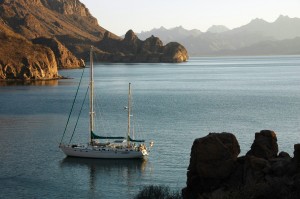
Who: Lionel Dobson and Barbara Erickson
Port: Victoria, BC




